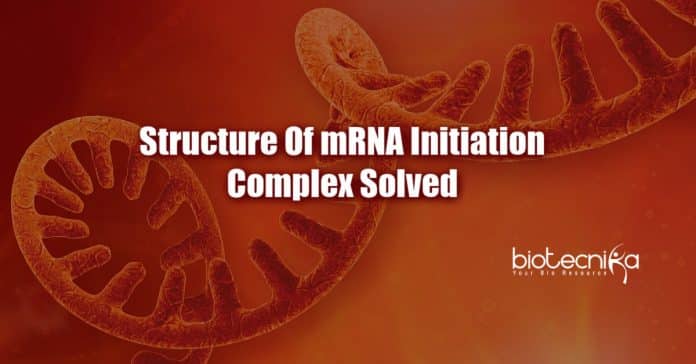New insight into cancer and other diseases: From the structure of mRNA initiation complex
The structure of the complex formed when mRNA is being scanned to identify the beginning point for translating RNA into a protein has been solved by the scientists at the University of California, Davis, and the MRC Laboratory of Molecular Biology, Cambridge. This study offers a novel insight into this fundamental process. The result of the study is released in the journal Science.
Christopher Fraser, co-author, and professor of molecular and cellular biology, UC Davis said that this structure transforms what we understand about translation initiation in human cells as well as there has been an incredible excitement from individuals in the field.
Cells utilize different subsets of genes to make the proteins they need to execute their roles, even though almost all the cells in our body carry the entire genome. This needs specific control over the processes by which the DNA is initially transcribed to synthesize mRNA, which is later translated to synthesize proteins.
The process of translation starts when a ribosome affixes to a piece of mRNA and scans it till it locates a start codon, 3 letters of RNA that state “begin translating at this point”. There are over various proteins called initiation factors associated with this procedure. In different cancers, a lot of these initiation factors have been discovered to be dysregulated.
But, as there is a lack of knowledge of the structures of the whole complex, there is inadequate info on how these factors collaborate and scan mRNA.
To explore this, Fraser and postdoctoral researcher Masaaki Sokabe from UC Davis Dept of Molecular and Cellular Biology teamed up with Jailson Brito Querido, Venki Ramakrishnan, Yuliya Gordiyenko, and Sebastian Kraatz from the LMB to visualize the complex’s structure. Venki Ramakrishnan is a noble prize holder for his work on the ribosome’s structure in 2009.
To trap in the act of scanning, an mRNA that lacked a start codon was used by the group. 3000 of these complexes can be fitted across the width of a human hair, while it is huge for a biological machine. To get a structure of the complex including the trapped mRNA, the group used cryoelectron microscopy, which permits recording 3D videos of biological molecules down to the scale of single atoms.
The team proposed a model, based upon this structure, of how the mRNA slots into a network in the tiny ribosomal subunit, and also a system for how the mRNA could be pulled through the ribosome for scanning, like a strip of video through an old-style projector.
The team anticipated that the start codon would need to be sufficiently far from the front end of the mRNA for most mRNAs so that it can be located in the scanning procedure. Sokabe and Fraser biochemically verified this. Mark Skehel, LMB carried out mass spectrometry analysis which provided additional confirmation of the model.
Fraser stated, for making such work feasible on campus, the UC College of Biological Sciences’ cryo-electron microscopy center was begun.
The research was supported by UKRI MRC, NIH, Federation of European Biochemical Societies, Louis-Jeantet Foundation, and Wellcome.
New insight into cancer and other diseases: From the structure of mRNA initiation complex
Author: Sruthi S






























